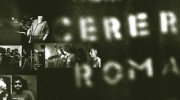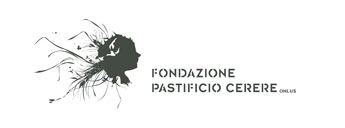A Course Inside the Former Pastificio Cerere - An Exhibition on Ghitta Carell
Project location: Italy, Rome
Project start date: May 2013 -
Project end date: December 2013
Project number: 2012-102
Beneficiary: Fondazione Pastificio Cerere Onlus
TIMELINE OF THE PRESENT ACTIVITY REPORT: From 01.01.2013 to 30.04.2013
From Thursday 18 April to Friday 17 May 2013, the Pastificio Cerere Foundation presented a vast retrospective dedicated to the renowned portraitist Ghitta Carell (1899-1972). Curated by Diego Mormorio, in collaboration with an advisory board, the exhibition comprised over 150 photographs that recount the history of an era - the years between the 1930s and 50s - by way of its protagonists.
Initiated and supported by the Nando Peretti Foundation, in collaboration with the 3M Foundation - which made the photographs available for the occasion - the exhibition aimed to contribute to a reevaluation of the figure of Ghitta Carell within the vital panorama of Italian photography, and Italian culture more broadly. On the one hand, the exhibition investigated the theme of the portrait as a fundamental issue in the history of visual representation and a central concern of modern art, and, on the other, examines the work of Ghitta Carell in relation to Italy's historical and anthropological developments during the period covered by her activity.
Ghitta Carell was one of the most famous figures in Italian photography for over thirty years - so much so that to be photographed by her gradually became, as this exhibition attested, a veritable status symbol. The exhibition is arranged throughout the most significant and fascinating spaces of the ex Pastificio Cerere.
All of Ghitta Carell's success derived from the composition and the elusiveness of her photographs, the two elements that became the signature of her work. She was an expert retoucher, using a method that consisted in a delicate manipulation of the plates in order to remove shadows, hard edges and voids, thus giving the subjects an air either less surly - for the Fascists - or more seductive, for the socialites.
Despite the new technologies arriving from the United States, Ghitta Carell continued to photograph in her own way - acquired at the photography course for "young ladies" in Budapest - using black and white film, usually with a large format (18x24) camera and less frequently with a 6x6 Rolleiflex.
The exhibition aimed to rediscover the work of this artist through a group of 30 original prints and an additional 150 images, almost all of which have been printed for the occasion. The images are presented in thematic groupings: nobility, clergy, bourgeoisie, industrialists, intellectuals, politicians, families, common people.
In addition, the exhibition included a video projection of Carell's entire output, as well as a selection of vintage magazines in which her portraits were published.
The exhibition is arranged throughout the Pastificio Cerere, occupying the most suggestive spaces of the former industrial building: the original prints are installed in the former grain elevator, now the main exhibition space of the Pastificio Cerere Foundation; the photographs of the clergy are in the Pino Casagrande Gallery; the female portraits are in the Pastificio San Lorenzo restaurant; and the remainder of the work, more substantial in volume, in the Spazio Cerere.
This exhibition presented a new occasion to continue experimenting the Pastificio Cerere's potentialities and strengths as a container for contemporary art, capable of functioning both within the individual spaces that compose it, and as a whole, as it did during the celebrated 1984 exhibition Ateliers.
The day of the opening of the exhibition Ghitta Carell and the Power of the Portrait, in the morning a preview presentation has been organized, only for the press, and in the evening the opening was for all the others invited, for both events there was about 600 persons. During the period of the exhibition, the Pastificio Cerere has been visited by approximately 1.000 people.






